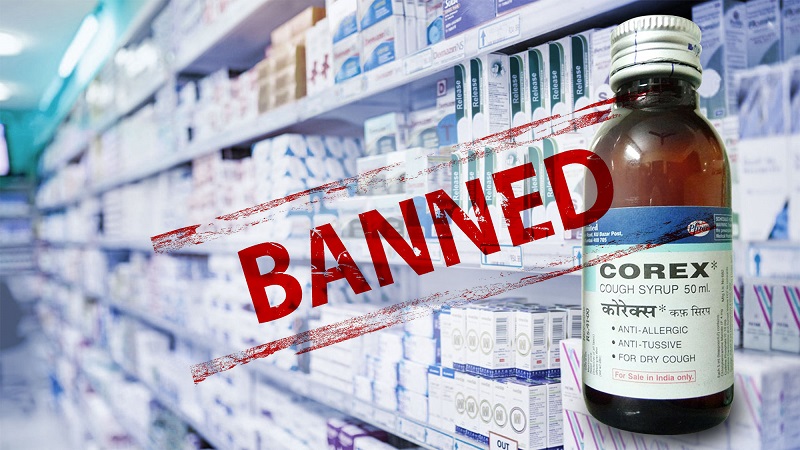Ban of Fixed Dose Combination (FDC) Drugs – Complete Analysis

From Current Affairs Notes for UPSC » Editorials & In-depths » This topic
IAS EXPRESS Vs UPSC Prelims 2024: 85+ questions reflected
Why in news?
- The Drug Technical Advisory Board (DTAB) in July 2018 has recommended banning 343 “irrational” fixed-dose combination (FDC) drugs.
- It has to be noted that, in 2017, the Supreme Court of India declared the Central’s government’s decision to ban 344 FDC drugs as invalid. The ban was imposed in 2016 on the recommendation of the Kokate committee appointed by the Central government. The major pharmaceutical firms had appealed against the ban.
What is FDC drug?
- FDC drug contains two or more active ingredients combined in a fixed dose to form a single drug.
- Many cough syrups, painkillers, and dermatological drugs in India are FDCs.
- A good example of FDC is the combination of Paracetamol with Ibuprofen. Paracetamol is an analgesic (painkiller) and antipyretic (preventing fever), while Ibuprofen is a non-steroidal anti-inflammatory drug. This combination cures the acute pain of many types like toothache, body ache etc.
- Some FDCs are marketed with licenses given only by “state regulatory agencies “rather than “Drug Controller General of India (DGCI).
What are the advantages of FDCs?
- Different ingredients in the FDC contribute to the overall therapeutic effect.
- Most FDC drugs have been found to be safe and effective.
- FDCs involve lower manufacturing and logistics costs compared to the costs of producing separate products.
- It ensures patients with low price, convenience, adherence to the regimen and low risk of antimicrobial resistance.
- Due to the above advantages, the development of FDCs is considered important from a public health perspective.
- FDC drugs are being used to treat a wide range of conditions and diseases particularly diabetes, HIV, malaria, and tuberculosis which are considered to be the major health threats in the world.
What are the disadvantages of FDCs?
- FDCs could be unsafe for consumption with potential health risks since the side-effects of the combined product in FDC are different from those of its individual ingredients.
- Sometimes, the combination can come with risks that are not originally existed in the individual ingredients.
- When an adverse reaction happens in a patient, it is very difficult to identify which ingredient caused that reaction.
- Many studies have pointed out that many of these combinations don’t have any advantage over individual drugs.
- Rampant use of FDCs in India enabled anti-biotic resistance to grow at a significant rate. A good example is an emergence of “ciprofloxacin resistant – salmonella typhi strains”, that have made typhoid treatment very difficult and expensive in India.
- FDCs are famous, not because of its therapeutic effect, but because of the profits that are earned by the Pharmaceutical companies due to low production cost and high demand.
You might want to read: Oxytocin Ban – Issues & Impacts
What is the current issue about?
- In 2016, the Ministry of Health & Family Welfare imposed a ban on 349 FDCs mentioning that there are enough single drug alternatives that are safer and effective. The ban was based on the recommendations of the Chandrakant Kokate committee.
- Pharmaceutical firms reacted to the ban by appealing in the Supreme Court. They argued that the statutory bodies on drug regulations were not consulted before the ban.
- Later the Supreme Court referred the matter to the Drug Technical Advisory Board (DTAB) and directed it to make a fresh review on the issue of FDC drugs.
What are the major findings and decision of DTAB?
- Most of the pharmaceutical firms that manufactured FDCs had not created safety and efficacy data for their FDCs.
- Around 95% of the appellants failed to prove safety, rationality, and compatibility of these FDCs.
- The usage of most FDCs leads to unnecessary overuse. Hence patients are exposed to risks associated with multiple ingredients when one would suffice actually.
- India became a dumping ground for irrational FDCs that are not approved in other countries.
- Thus the DTAB decided to reinforce the ban on 343 out of 349 drugs that were earlier banned. It also decided to allow the remaining 6 FDCs with restricted usage.
You might want to read: National Health Protection Scheme – All that you need to know
What are the arguments against the ban?
- The market size of the banned FDC drugs is around Rs 20-22 billion and hence the ban will adversely impact the country’s top drug-makers.
- These FDCs contribute roughly to 1.8% of the overall domestic drug market.
- FDC sector is already in a slower growth rate compared to the rest of the domestic drug market. The ban only aggravates it.
- These 343 FDCs are only a small portion of the FDCs that are sold in the country. What about the additional 944 FDCs that were identified by the kokate committee as being irrational?
What is the way forward?
- It is not advisable to ban each and every FDC drug considering the huge market size. However, the rationality of FDCs in the future should be determined based on certain key aspects as follows
- The ingredients in the combination should work by different mechanisms.
- The pharmacokinetics (effect of the drug in the body) of ingredients must not be widely different.
- FDC should not have toxins created due to a combination of ingredients.
Practice Question
What is Fixed Dose Combination (FDC) drug? Critically evaluate the merits and demerits of Fixed Dose Combination (FDC) drugs
If you like this post, please share your feedback in the comments section below so that we will upload more posts like this.


